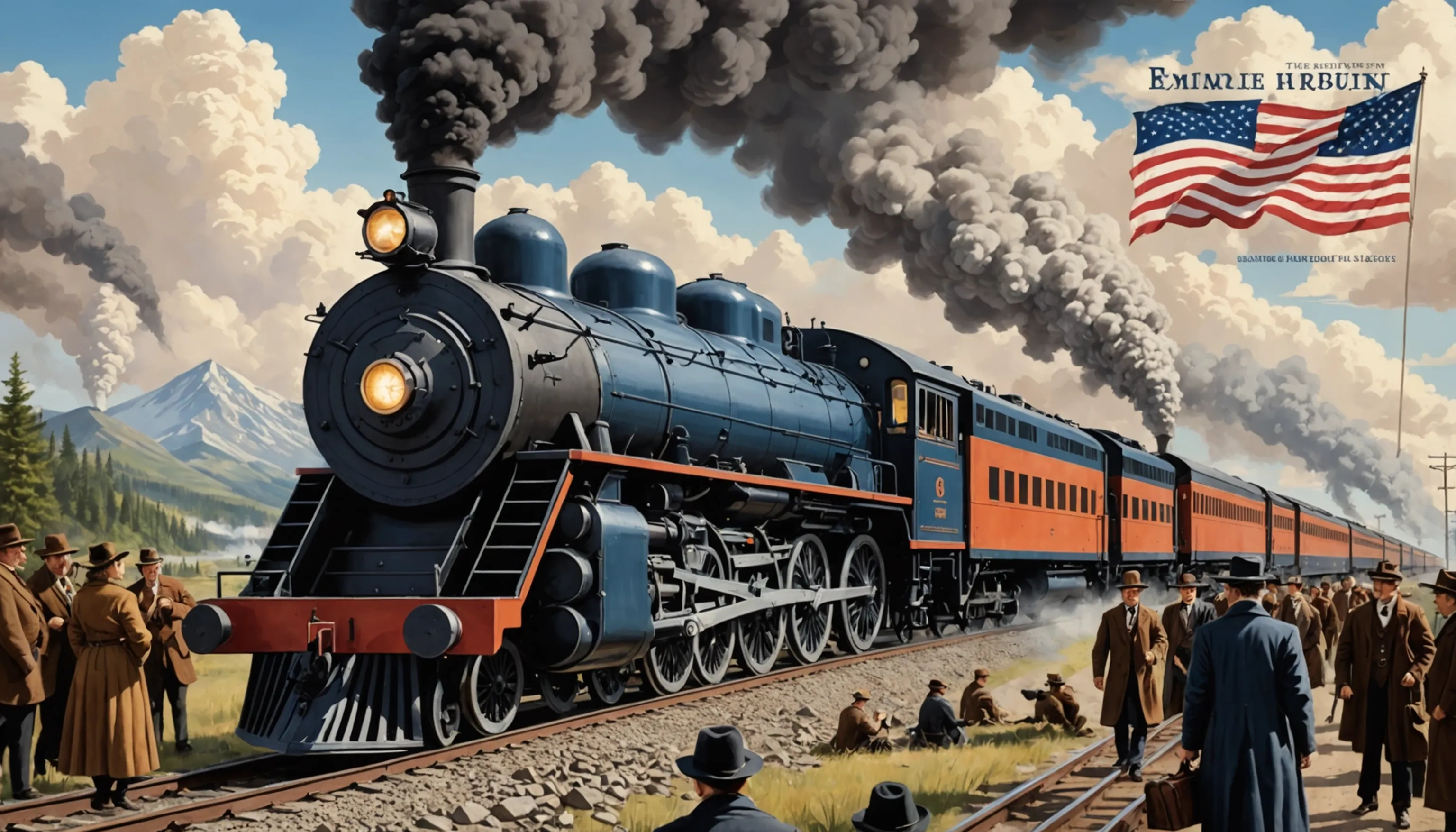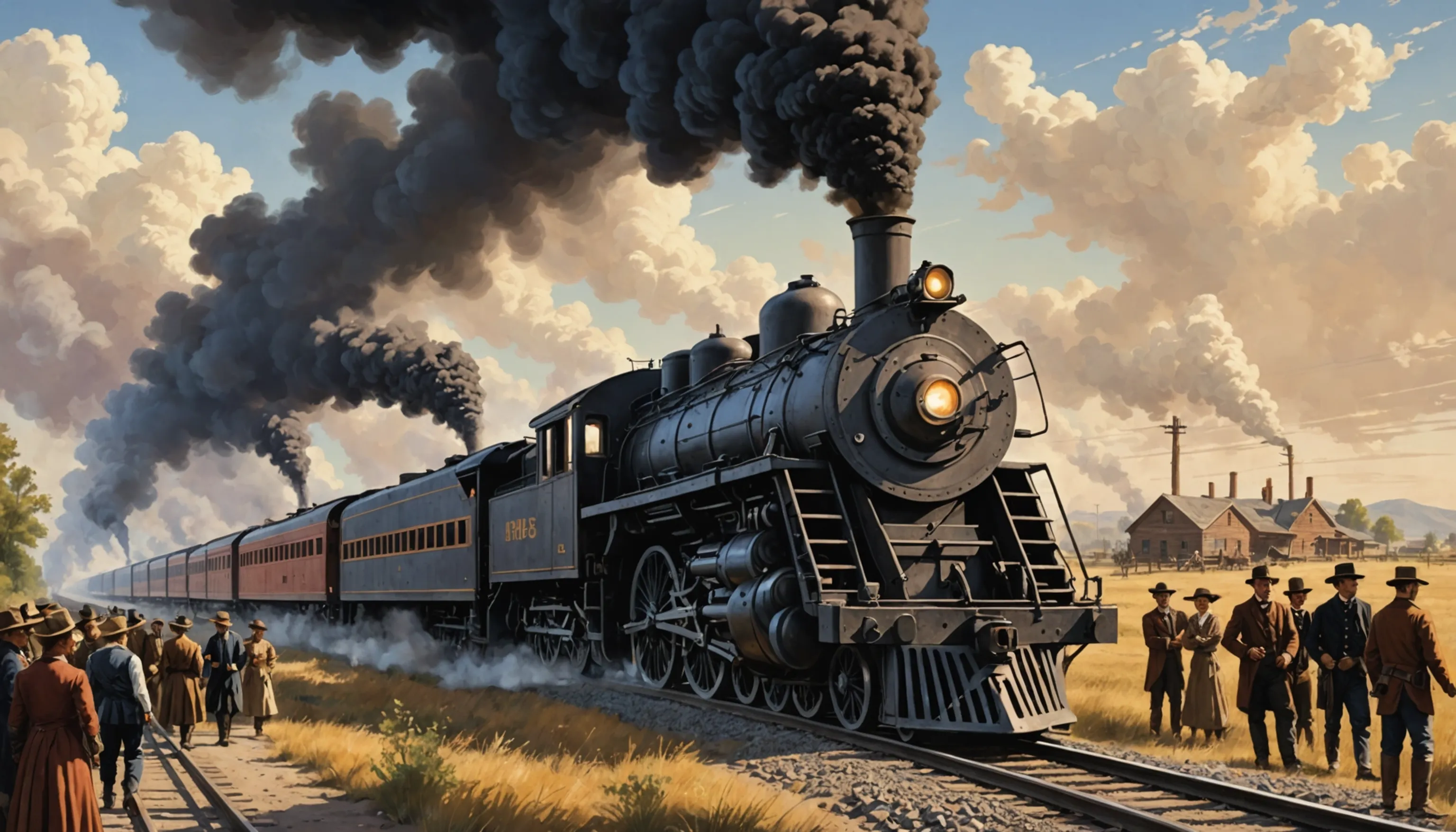Empire Builder: A Guide for Parents and Teachers
 HvWHenry van Wagenberg
HvWHenry van Wagenberg
Understanding the Empire Builder: A Guide for Parents and Teachers
The Empire Builder is an essential concept for parents and teachers to understand when discussing American history and its development. This term typically refers to those influential figures and events that contributed to the expansion and growth of the United States, particularly in the 19th century. By examining the Empire Builder, educators can highlight the complexities of historical narratives, including themes of innovation, exploration, and sometimes conflict. This understanding helps parents and teachers guide teenagers in developing a critical perspective on how history shapes our modern world, encouraging them to engage thoughtfully with the past.
What is the Empire Builder?
The Empire Builder is a term that encompasses key figures and events in American history that were instrumental in the expansion of the United States, particularly during the 19th century. Often associated with leaders like James J. Hill, who played a critical role in developing the Great Northern Railway, the Empire Builder symbolizes ambition, innovation, and the drive for progress. Hill's vision of connecting the northern U.S. to the Pacific Northwest not only facilitated transportation but also promoted trade and immigration, shaping the development of the region.
More broadly, the Empire Builder represents the spirit of expansionism that characterized this era, including the westward movement, the establishment of new settlements, and the construction of essential infrastructure like railroads and telegraph lines. This era was marked by the belief in Manifest Destiny, the idea that it was America’s divine right to expand its territory from coast to coast.
Understanding the Empire Builder helps students appreciate the complexities of American history, including the cultural, economic, and social impacts of this expansion. It also raises discussions about the consequences for Indigenous populations and the environment. Through the lens of the Empire Builder, educators can encourage critical thinking about historical narratives, the motivations behind expansion, and its lasting effects on contemporary society.

The significance of the Empire Builder in history
The Empire Builder holds significant importance in American history, representing the dynamic spirit of growth and expansion that defined the 19th century. This term not only refers to influential figures, such as railroad magnate James J. Hill but also embodies the broader movement of Manifest Destiny, which was rooted in the belief that the United States was destined to expand across the continent.
One of the key contributions of the Empire Builder was the development of essential infrastructure, particularly the railroad network. Hill's Great Northern Railway linked the northern Midwest to the Pacific Northwest, facilitating trade, transportation, and the movement of people. This railway played a pivotal role in the economic development of the region, opening up new markets and resources while encouraging settlement in previously remote areas.
The Empire Builder also highlights the complexities of American expansion. While it brought progress and opportunity for many, it often came at the expense of Indigenous populations, whose lands were encroached upon and whose cultures were disrupted. Understanding this duality is crucial for students as they explore the multifaceted nature of American history.
By examining the significance of the Empire Builder, educators can foster meaningful discussions about the motivations behind expansion, the impact on different communities, and the lessons that can be drawn from this period. This understanding is vital for shaping informed, critical thinkers who can navigate the complexities of modern society.
How the Empire Builder impacts education
The Empire Builder impacts education by providing a framework for understanding American history and its complexities. Incorporating this concept into curricula helps students explore themes of expansion, innovation, and the consequences of progress. By examining figures like James J. Hill and the development of railroads, educators can foster critical thinking about historical narratives and the diverse perspectives involved. This not only enhances students' knowledge of the past but also encourages them to engage with contemporary issues related to growth, sustainability, and social justice. Ultimately, the Empire Builder serves as a valuable tool for enriching educational discussions.

Incorporating the Empire Builder into lesson plans
Incorporating the Empire Builder into lesson plans can provide students with a rich understanding of American history and the dynamics of expansion. To effectively integrate this concept, educators can begin by introducing the historical context surrounding the Empire Builder, focusing on key figures like James J. Hill and the impact of railroads on the United States' growth.
One effective strategy is to create a multi-part lesson plan that explores various aspects of the Empire Builder. For instance:
- Historical Background: Start with lessons on Manifest Destiny and the economic, social, and political factors that drove expansion.
- Case Studies: Analyze specific projects, such as the Great Northern Railway, discussing its significance in connecting regions and facilitating trade.
- Critical Perspectives: Encourage students to engage in discussions about the effects of expansion on Indigenous populations and the environment.
Additionally, incorporating multimedia resources, such as documentaries and primary source materials, can enhance students’ engagement and understanding. Group projects, debates, or role-playing exercises can also facilitate deeper exploration of the themes associated with the Empire Builder.
By utilizing diverse teaching methods and resources, educators can create a comprehensive learning experience that fosters critical thinking and encourages students to connect historical events to contemporary issues, making the lessons relevant and impactful.
Encouraging discussions about the Empire Builder
Encouraging discussions about the Empire Builder in the classroom is vital for helping students develop a nuanced understanding of American history and its complexities. To foster meaningful dialogue, educators can implement various strategies that engage students and promote critical thinking.
First, creating a safe environment for open discussion is essential. Teachers can start by presenting thought-provoking questions related to the Empire Builder, such as:
- What were the motivations behind the expansion of the United States?
- How did the development of railroads impact different communities?
- What are the long-term consequences of this expansion on Indigenous populations?
By posing these questions, educators can encourage students to share their perspectives and engage with differing viewpoints. Small group discussions can also be effective, allowing students to collaborate and explore topics more deeply before sharing their insights with the larger class.
Additionally, incorporating multimedia resources, such as documentaries or primary source documents, can spark interest and provide context for discussions. Students may be prompted to analyze various viewpoints presented in these materials, leading to richer conversations.
Finally, educators can encourage students to draw connections between historical events and contemporary issues, such as land use, environmental concerns, and social justice. By making these connections, discussions about the Empire Builder become relevant and impactful, helping students understand the lasting significance of this historical era.
Resources for learning about the Empire Builder
There are numerous resources available for learning about the Empire Builder that can enhance understanding of American history. Key resources include:
- Books: Titles like "Empire Builder: James J. Hill and the Great Northern Railway" provide in-depth insights into the life and impact of Hill.
- Documentaries: Educational films offer visual context and narratives surrounding the Empire Builder's significance.
- Online Resources: Websites such as the National Archives and educational platforms host primary documents and interactive materials.
Utilizing these resources can enrich students' learning experiences.
Books and articles on the Empire Builder
When exploring the Empire Builder, a variety of books and articles can provide valuable insights into its historical significance and impact on American society. Here are some notable resources to consider:
- "Empire Builder: James J. Hill and the Great Northern Railway" by Robert A. Hine: This comprehensive biography delves into the life of James J. Hill, detailing his role in expanding the railway system and shaping the Pacific Northwest.
- "The Great Northern Railway: A History" by Michael A. D. P. J. Scharff: This book offers an in-depth analysis of the railway's development, its economic impact, and the challenges faced during its construction.
- "Manifest Destiny and American Territorial Expansion" (Journal Article): This scholarly article discusses the ideology of Manifest Destiny and its connection to the Empire Builder, providing a critical examination of the motivations behind westward expansion.
Additionally, academic journals such as the "Western Historical Quarterly" and the "Journal of American History" often feature articles that explore various aspects of the Empire Builder and its implications for American history.
Online databases like JSTOR and Google Scholar can also be useful for locating peer-reviewed articles and research papers related to the Empire Builder. By utilizing these books and articles, students and educators can gain a deeper understanding of the complexities surrounding this pivotal era in American history.
Online resources and documentaries
Exploring the Empire Builder through online resources and documentaries can significantly enhance the understanding of its historical context and impact. Numerous digital platforms provide valuable information and visual content that cater to various learning styles.
One excellent online resource is the National Archives, which hosts a wealth of primary documents related to American expansion. Students can access maps, letters, and official records that illustrate the development of the Empire Builder and its significance in shaping the United States.
Another valuable site is History.com, which features articles and videos on the Empire Builder and related topics. Their engaging content often includes interactive elements, making it easier for students to grasp complex concepts.
Documentaries also serve as an impactful educational tool. For instance, “The Great Northern Railway: A Journey Through Time” provides a visual narrative of the railway's construction and its role in American expansion. This documentary features interviews with historians, archival footage, and stunning visuals of the landscapes affected by this development.
Platforms like YouTube also host various educational videos and mini-documentaries that delve into the lives of key figures like James J. Hill and the broader implications of the Empire Builder. By incorporating these online resources and documentaries into lesson plans, educators can create a dynamic learning environment that fosters curiosity and critical thinking about American history.
